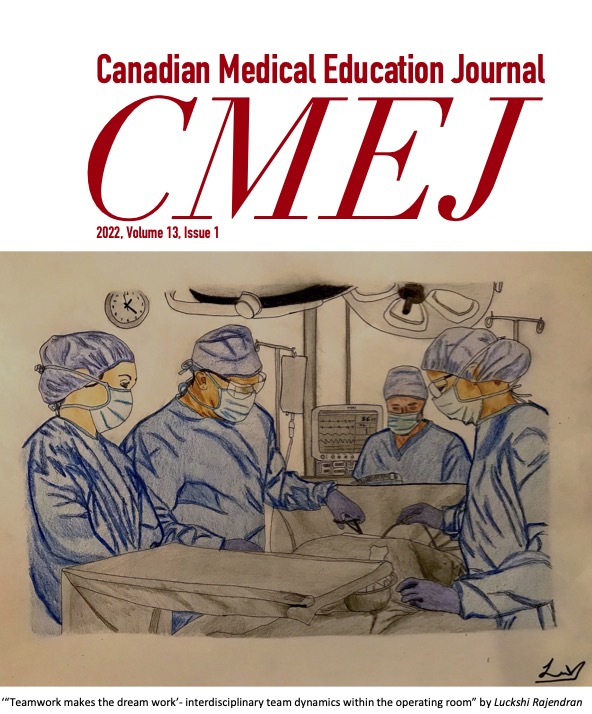Conformity, obedience, and the Better than Average Effect in health professional students
DOI:
https://doi.org/10.36834/cmej.71970Abstract
Background: Compliance, through conformity and obedience to authority, can produce negative outcomes for patient safety, as well as education. To date, educational interventions for dealing with situations of compliance or positive deviance have shown variable results. Part of the challenge for education on compliance may result from disparities between learners' expectations about their potential for engaging in positive deviance and the actual likelihood of engaging in positive deviance. More specifically, students may demonstrate a Better Than Average Effect (BTAE), the tendency for people to believe they are comparatively better than the average across a wide range of behaviours and skills.
Methods: Four vignettes were designed and piloted using cognitive interviews, to investigate the BTAE. Conformity and obedience to authority were each addressed with two vignettes. The vignettes were included in a survey distributed to Canadian health professional students across multiple programs at several different institutions during the Winter 2019 semester. Self-evaluation of behaviour was investigated using a one-sample proportion test. Demographic data were investigated using logistic regression to identify predictors of the BTAE.
Results: Participants demonstrated the BTAE for expected behaviour compared to peers for situations of conformity and obedience to authority. Age, sex, and program year were identified as potential predictors for exhibiting the BTAE.
Conclusions: This study demonstrated that health professional students expect that they will behave better than average in compliance scenarios. Health professional students are not exempt from this cognitive bias in self-assessment. The results have implications for education on compliance, positive deviance, and patient safety.
Downloads
Downloads
Published
How to Cite
Issue
Section
License
Copyright (c) 2019 Efrem Violato, Sharla King, Okan Bulut

This work is licensed under a Creative Commons Attribution-NonCommercial-NoDerivatives 4.0 International License.
Submission of an original manuscript to the Canadian Medical Education Journal will be taken to mean that it represents original work not previously published, that it is not being considered elsewhere for publication. If accepted for publication, it will be published online and it will not be published elsewhere in the same form, for commercial purposes, in any language, without the consent of the publisher.
Authors who publish in the Canadian Medical Education Journal agree to release their articles under the Creative Commons Attribution-Noncommercial-No Derivative Works 4.0 Canada Licence. This licence allows anyone to copy and distribute the article for non-commercial purposes provided that appropriate attribution is given. For details of the rights an author grants users of their work, please see the licence summary and the full licence.











